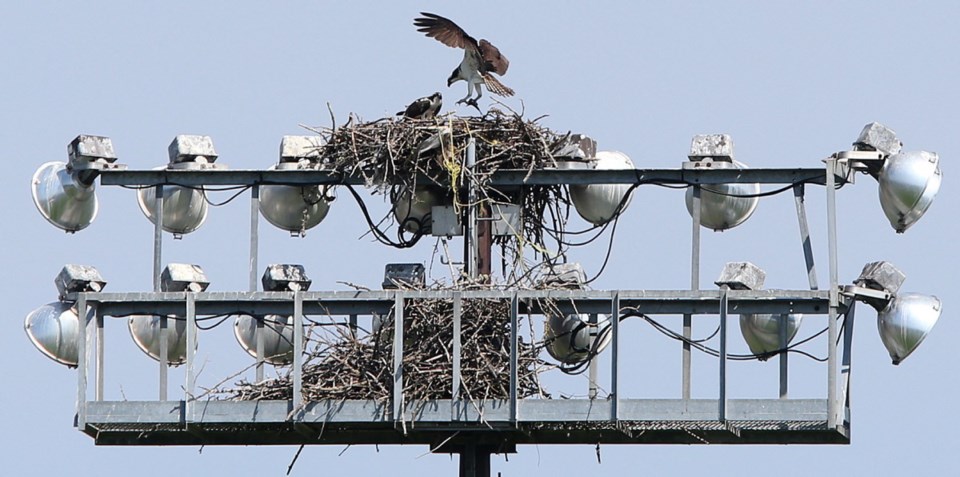A University of Victoria webcam documenting the round-the-clock activity of a family of ospreys has become a hit on campus and online, drawing viewers from around the world.
Video of the ospreys has been streaming live since early July, netting as many as 1,000 views a day. Thanks to a webcam placed in view of the nest, which is located atop a soccer field light standard near the school’s Centennial Stadium, followers are being given a rare glimpse into the daily activities of the birds of prey.
Sarah Blackstone, the driving force behind the webcam, said the response has been great.
“There is someone from Mexico City that is watching daily, and we’ve had hits from New Zealand and several places in England, Germany, Canada and the United States,” Blackstone said. “I don’t know how the word gets out, but people have discovered it.”
Both chicks took their first flights from the nest this month, which resulted in a spike in viewership. “During the three-day B.C. Day weekend, we got over 1,000 hits on one day,” Blackstone said. “It actually crashed the site.”
Blackstone, who is the special projects to adviser to UVic’s provost, said she has been watching the nest with interest for the past 10 years, as have many others on campus. She often gets stopped by co-workers looking for an update on the ospreys’ status.
Blackstone, who also blogs about the webcam activity, said UVic president Jamie Cassels is “a big fan” of the idea.
“It has been such a great ambassador for the university since the camera went up,” she said. “It’s a terrific learning opportunity. It’s nature, right there.”
Viewers can follow the fish-eating raptors for the next month or so, but they are almost ready to move on to sunnier shores. The family, which lost a chick shortly after it hatched, is temporarily down another member. Two weeks ago, the female vacated the nest, likely headed for South America, the destination for most ospreys that breed in North America. The male stayed behind to tend to the two chicks, but he will head off sometime next month.
The chicks will go to the Gulf Coast of the U.S. once they are strong enough to bring a fish back to the nest. Until that happens, they are not capable of heading out on their own, Blackstone said. “[The male] continues to provide food. Eventually, he will give up on that and migrate to Mexico or wherever he goes for the winter.”
The male and female will likely reconnect at the nest in April, Blackstone said, but the chicks will not return for three years, or until they are ready to mate.
Normally, this type of migration would be noticed only by the most ardent birdwatchers. But thanks to the webcam, the ospreys have found an audience on campus.
“I really enjoy watching them,” Blackstone said. “I feel like I know them intimately.”
The webcam can be viewed by visiting uvic.ca/osprey.



